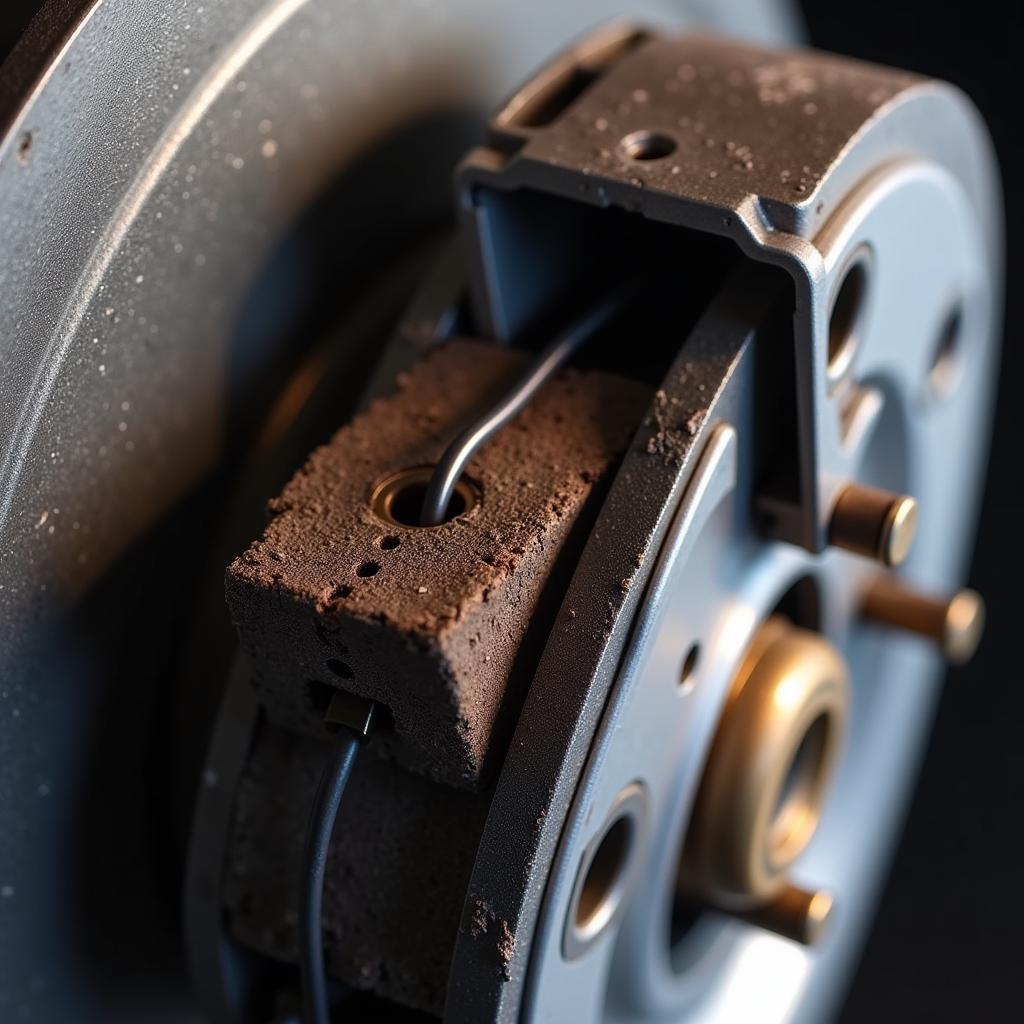Car battery signal lights are crucial indicators of your vehicle’s electrical system health. A glowing, flickering, or dim battery light can signal various issues, from a loose battery cable to a failing alternator. Understanding these signals is key to preventing costly repairs and ensuring your car runs smoothly. Let’s delve into the intricacies of car battery signal lights and learn how to diagnose and address potential problems.
Decoding Your Car’s Battery Light Signals
The car battery light, typically a red battery icon on your dashboard, illuminates when the charging system isn’t functioning correctly. This doesn’t necessarily mean your battery is dead, but rather that it’s not receiving the charge it needs to operate optimally. A consistently lit battery light demands immediate attention, as it can lead to a complete electrical system failure, leaving you stranded. If you’re experiencing issues with your car key’s battery life, you might want to check out our article on car key battery keeps dying.
What a Bright Battery Light Indicates
A bright, steady battery light usually signals a problem with the alternator, the component responsible for charging the battery while the engine is running. A faulty alternator can’t replenish the battery’s charge, leading to a gradual drain and eventual failure.
Dim Battery Light: A Subtle Warning
A dim battery light can be more challenging to diagnose. It might indicate a slight issue with the alternator, a loose or corroded battery cable, or even a dying battery. While less urgent than a bright light, a dim battery light should still be investigated promptly to prevent further complications. Hybrid car owners might also encounter specific battery problems; learn more about hybrid car battery problems.
Flickering Battery Light: An Intermittent Issue
A flickering battery light suggests an intermittent problem, often related to a loose connection, a failing voltage regulator, or a worn-out serpentine belt that drives the alternator. Identifying the source of this flicker is crucial to prevent more significant issues down the road.
Diagnosing and Addressing Car Battery Signal Light Issues
When your car battery signal lights illuminate, taking swift action is essential. Here’s a step-by-step guide to diagnosing and addressing the problem:
-
Check the Battery Cables: Inspect the battery terminals for corrosion or looseness. Clean any corrosion with a wire brush and baking soda solution, and ensure the cables are tightly secured.
-
Test the Alternator: Use a multimeter to test the alternator’s output voltage. A healthy alternator should produce around 14 volts. If the voltage is significantly lower, the alternator might be faulty.
-
Inspect the Serpentine Belt: Check the serpentine belt for wear and tear, cracks, or looseness. A worn-out belt can affect the alternator’s performance.
-
Consult a Professional: If you’re unable to identify the issue or are uncomfortable working on your car’s electrical system, it’s best to consult a qualified mechanic. If you are dealing with multiple warning lights, it’s worth checking out our resource on check engine light oil light and battery light on.
“A flickering battery light, while seemingly minor, can be a precursor to a major electrical failure. Addressing the issue promptly can save you from a roadside breakdown,” advises Alex Thompson, ASE Certified Master Technician.
Why is my car battery light on?
The car battery light illuminates when the battery isn’t charging properly, often due to a faulty alternator or loose connections.
What does a dim battery light mean?
A dim battery light can indicate a minor issue with the charging system, such as a loose cable or a weakening alternator.
How do I fix a flickering battery light?
Addressing a flickering battery light involves checking the battery cables, testing the alternator, and inspecting the serpentine belt. You might find our article on the 2020 Honda Accord key fob battery helpful if you’re experiencing related key fob issues.
“Regularly checking your battery and charging system can prevent unexpected electrical problems and ensure your vehicle’s reliability,” adds Maria Sanchez, Electrical Systems Engineer.
Conclusion
Understanding car battery signal lights is vital for maintaining your vehicle’s health and preventing costly repairs. By promptly addressing any illuminated warning lights, you can ensure your car’s electrical system functions optimally and avoid unexpected breakdowns. Remember to consult a qualified mechanic if you’re unsure about diagnosing or addressing the issue. Staying informed about car battery signal lights empowers you to keep your vehicle running smoothly and safely.
Is there an anti-theft device in your car? Find out more in our article: is there an anti theft device installed on a car.

